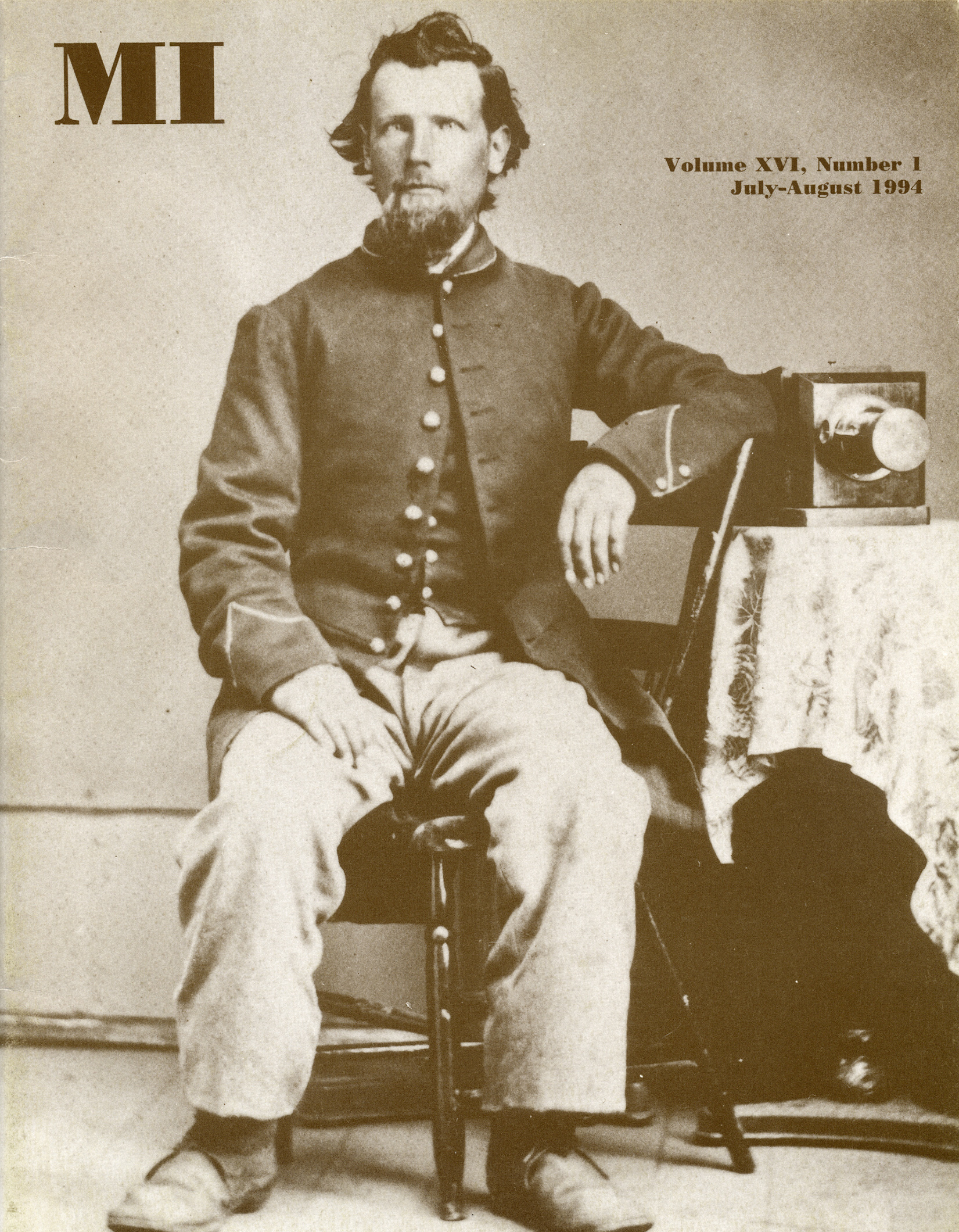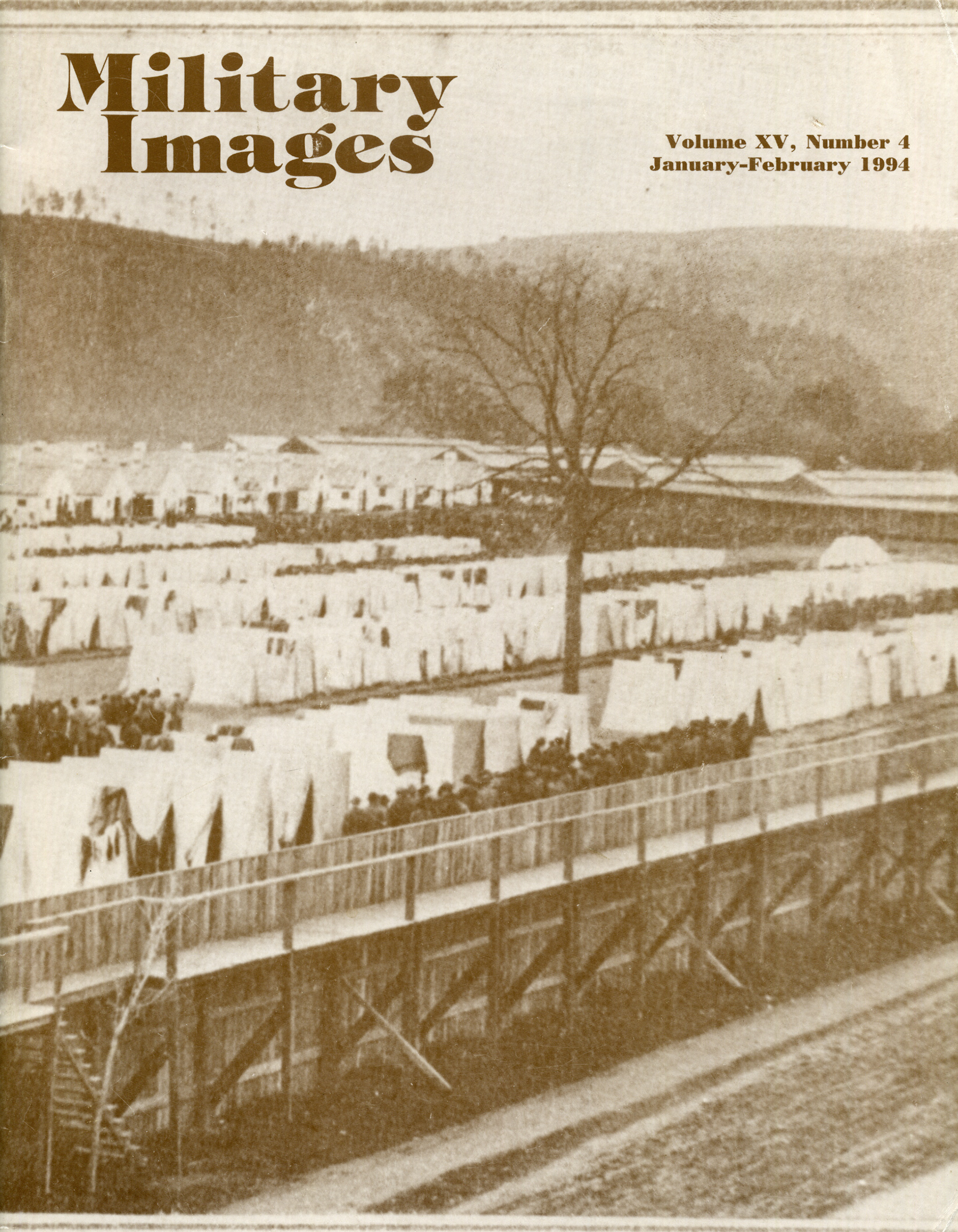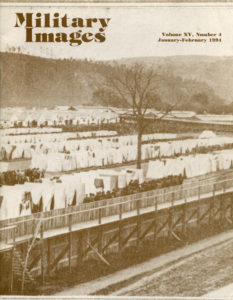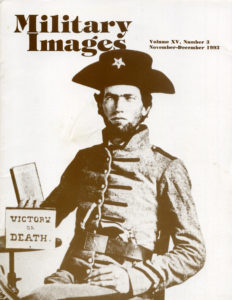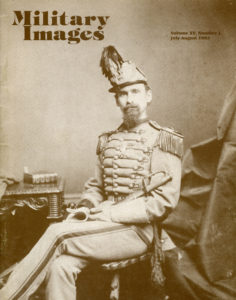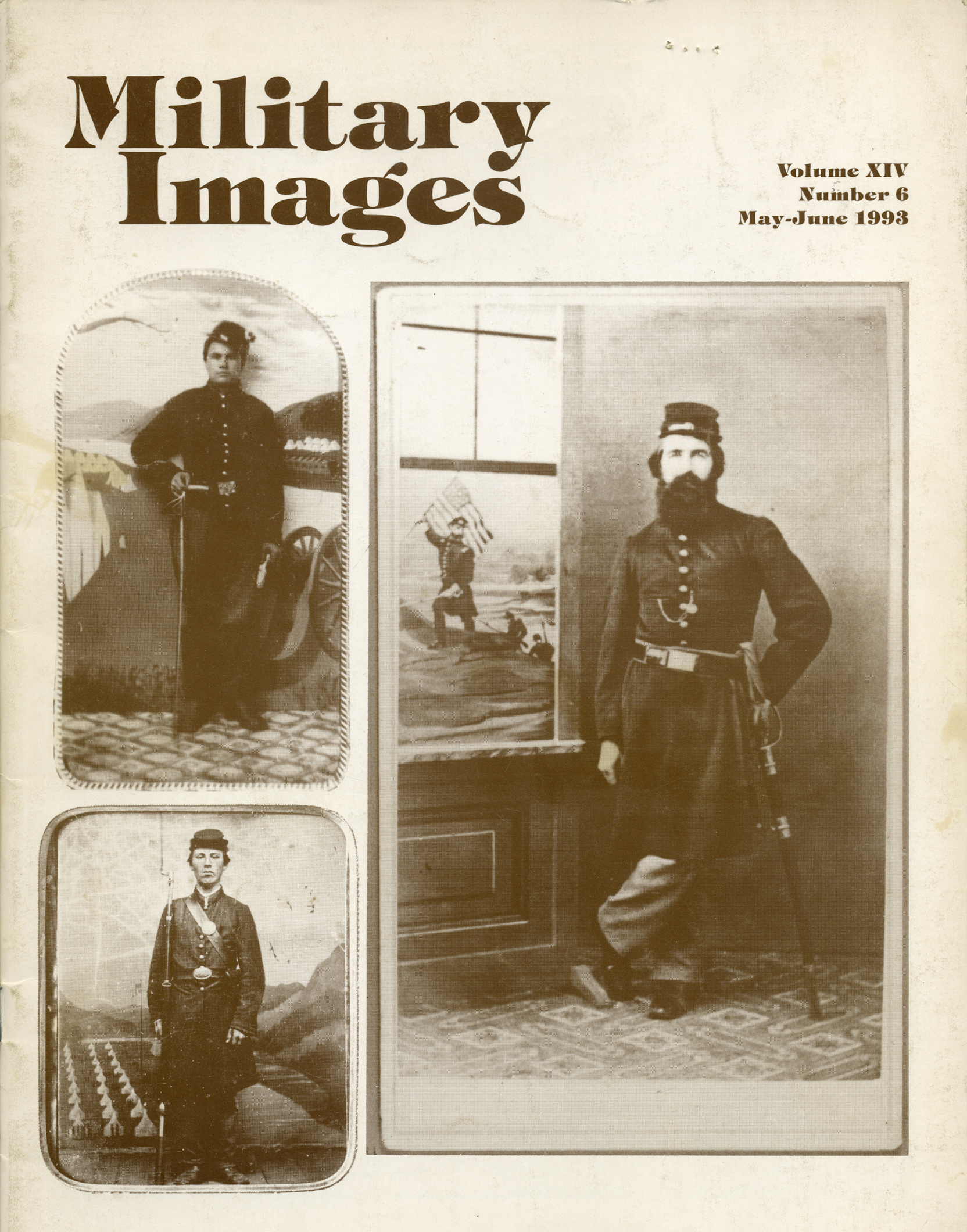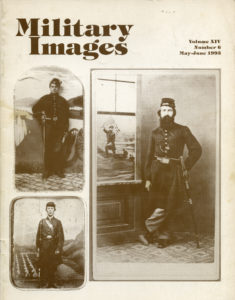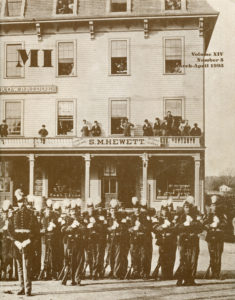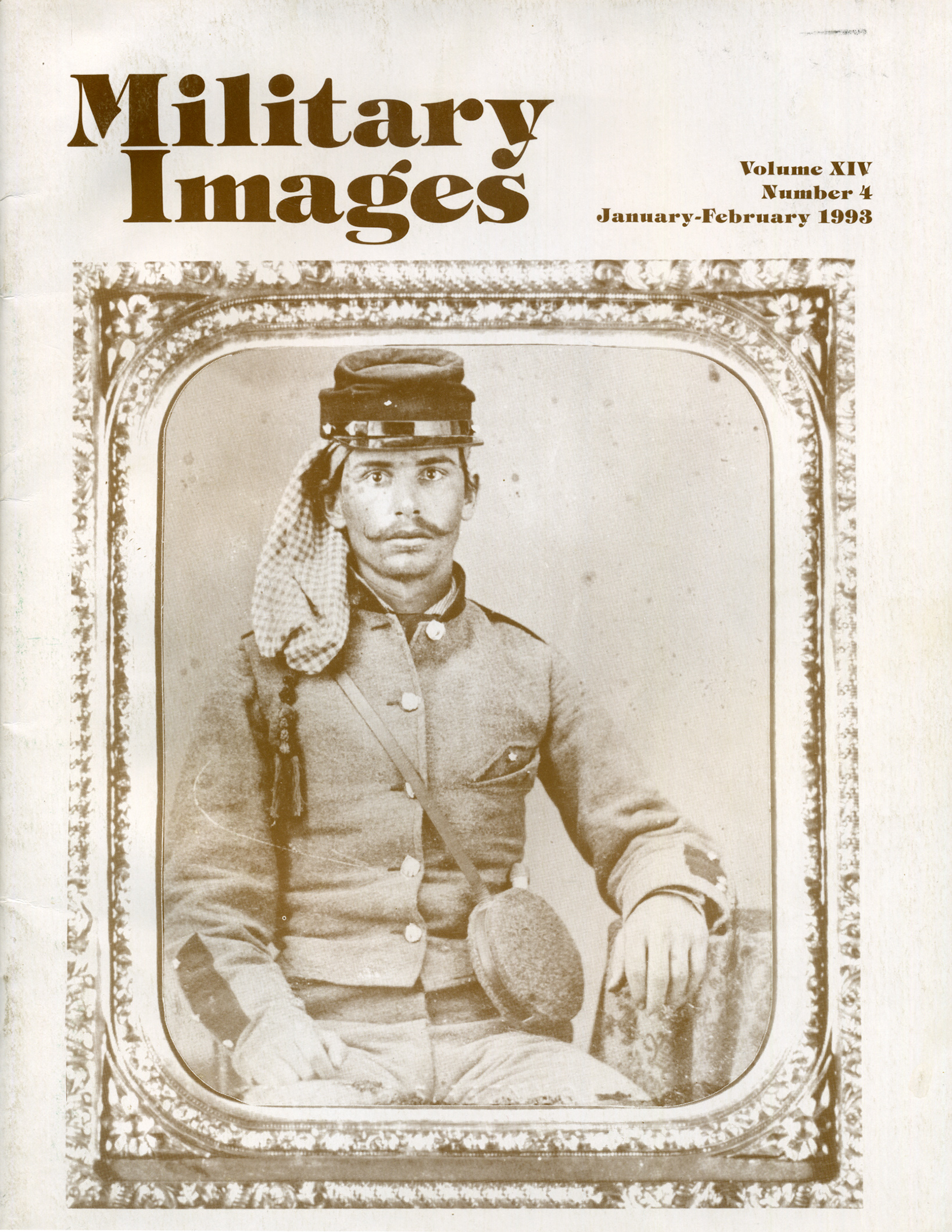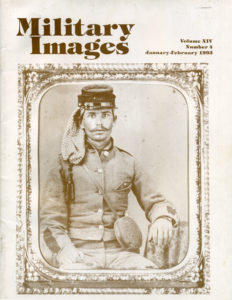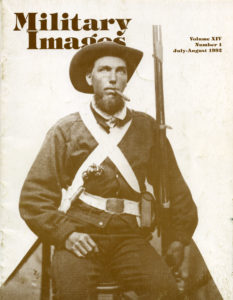The complete issue
Vol. XVI, No. 1
(40 pages)
Print edition: Visit our store to check availability
Digital edition: Visit JSTOR.org to purchase
Subscribe to MI
Explore the MI Archives: Browse | Advanced search | Tutorial
Inside
Cover image
A carte de visite from the Minnesota Historical Society pictures William Henry Gale of the 11th Minnesota Infantry posed with a camera.
Editor’s Desk (p. 1)
The editor announces the move to 40 pages. Most of the additional space is dedicated to articles and photographs. He asks readers to keep contributing and points out that circulation needs to increase.
Mail Call (p. 3)
The letters to the editor includes details about the remains of the gunboat Eastport and a note about the 1864 addition of a star to the cuff insignia of Union navy officers.
Passing in Review (p. 5)
Two publications are mentioned, Custer’s Last Campaign: Mitch Boyer and the Little Bighorn Reconstructed (University of Nebraska Press) by John S. Gray and Historical Register & Dictionary of the United States Army, 1789-1903 (Genealogical Publishing Co.) by Francis Heitman.
Precious Shadows: The importance of photographers to Civil War soldiers, as revealed by a typical Union regiment by Mark Dunkelman and Michael Winey (pp. 6-13)
The importance of photographs, akin to letters and packages from home, cannot be underestimated for their morale-boosting ability. “Photographs sent by family and friends were deeply desired by Civil War soldiers, treasured when they were received, and cherished as precious mementos of loved ones at home,” observes the authors. The narrative is illustrated with a dozen images of members of the 154th New York Infantry, including a hard-plate image of Amos Humiston, who was found dead on the battlefield of Gettysburg, clutching an ambrotype of his three children.
Roy’s Rebs: Confederate images in the collection of Roy Mantle (pp. 14-19)
A survey of 17 images from Mantle, who began collecting in 1982. None of the images are fully identified, though all are strong examples of Confederate photography.
A Pair of Crimson Tales: The Harvard Cadets and a Harvard Rivalry by Jack Trotter and Robert F. Dame Esq. (pp. 20-21)
“A History of the Harvard Cadets,” by Trotter, is illustrated with a portrait of an unidentified officer. “A Harvard Rivalry,” by Dame, traces the history of Harvard graduates in the 20th Massachusetts Infantry. The author’s ancestor, Pvt. Anton Steffens, was killed at Fredericksburg in December 1862.
Backdrops: Another look at photographic set design of the Civil War era (pp. 22-25)
Another selection of elaborately painted backdrops is the focus of this survey of 16 images. Most of the backdrops are military themed, but a few are bucolic views of flora and fauna.
The Feast of Victorian Proportions: Backdrops from 1870 to 1900, by Anthony Gero (pp. 26-28)
A study of 9 portraits of soldiers and sailors suggests that though the uniforms have changed, the backdrops are of the same quality and style as those painted during the Civil War.
The Withered Tree Backdrop by Terry McGinnis (p. 29)
A truncated stump located at the bottom left of a painted canvas backdrop provided a convenient place for photo sleuthing by the author. His investigations revealed that the photographer may have worked at Camp Dennison or Camp Dick Corwin in Ohio.
Uniforms & History by Michael J. McAfee (pp. 30-34)
In “U.S. Marine Corps, 1861-65,” McAfee examines the uniforms worn before and during the Civil War. The text is illustrated by 15 images, including a full page dedicated to variations on the officer’s uniform.
His Brother’s Keeper by David Sullivan (pp. 35-36)
The story of the Marine Battalion at the First Battle of Bull Run is illustrated with portraits of Lt. Joseph Fairchild Baker of the Marines and his brother, Capt. John Pope Baker of the 1st U.S. Cavalry.
Stragglers (p. 37)
A single photo, an ambrotype of Col. William M. Shy of the 20th Tennessee Infantry, is part of the collection of Ronny Mangrum of Franklin, Tenn.
Sutler’s Row (pp. 38-40)
Back cover
A carte de visite from the Steve Rogers Collection is a portrait of M. Jeff Thompson, better known as the Missouri Swamp Fox.

